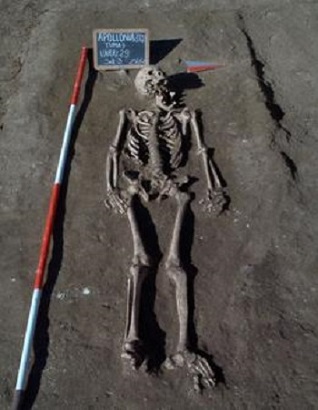
There was first a significant human presence in the immediate vicinity of Apollonia after the establishment of the Greek colony. The largest quantities of Archaic and Classical pottery found are associated with graves in the cemeteries of the Kryegjata valley, although smaller amounts are present in other locations, including the valley of Shtyllas. Tumuli, sarcophagi and graves in use during the Archaic, Classical and Hellenistic periods exist in great numbers in what is traditionally thought to have been the main necropolis serving the city of Apollonia. However, significant numbers of graves and several tumuli were also located in areas well removed from the main necropolis. Burials are to be found throughout most of the valley system east of the city walls of Apollonia.
The grave goods are of such an importance and of such an early date that it is clear that the Greek colonists got in touch with a quite developed local population with extended exchanges.
Protourban sites were positioned on the valleys of Gjanica and Vjosa river. Several of the sites are located in favorable positions with good visiblity over the surrounding area. During the protourban period the region around Apollonia was intensively inhabited and the landscape was dotted with hilltops and open-air settlements.
- BCE
- 1000 - 588
- 588- 229
- 229 - 395
- 395- 1400
- CE